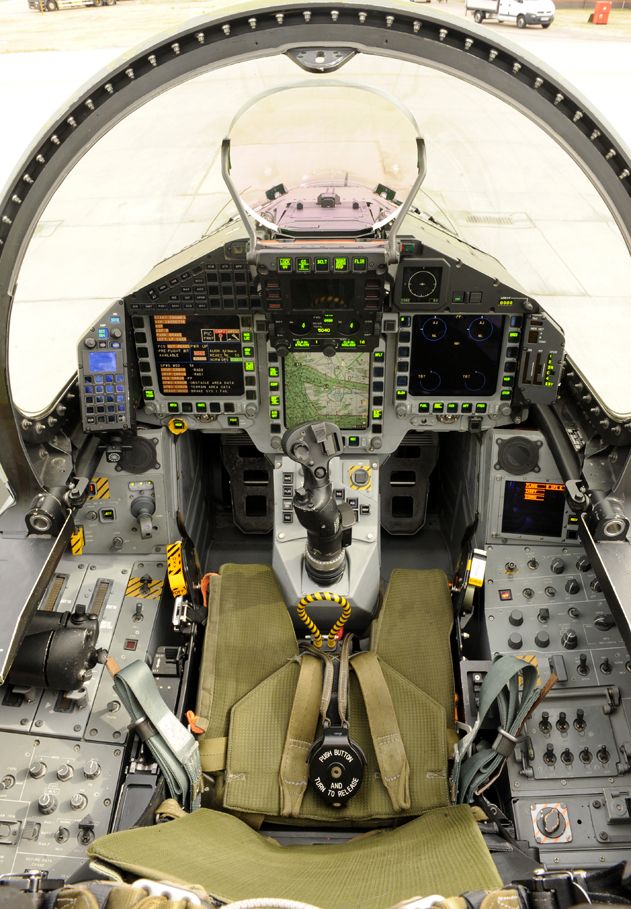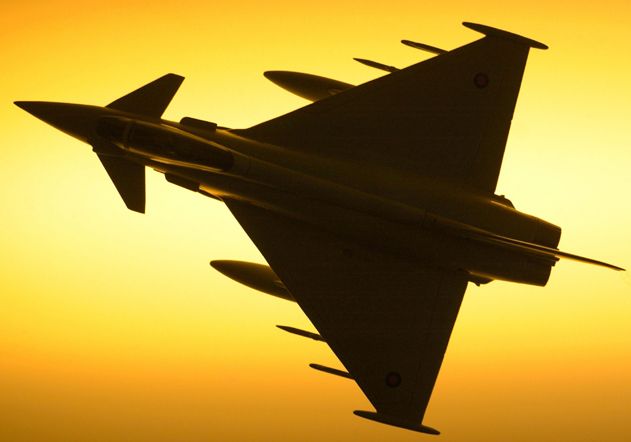Under the Eurofighter’s Hood
Europe’s frontline fighter is a marvel of technology.
/https://tf-cmsv2-smithsonianmag-media.s3.amazonaws.com/filer/Eurofighter-hood.jpg)
Up close, the Eurofighter Typhoon is an exotic, beautiful machine that seems seamless, as if carved from a single block of a light, grey material. Perhaps because of the whisker-like canards on the nose, it has a faintly feline look.
Behind that intriguing face is a confluence of technology that, as one Typhoon pilot put it, “was science fiction only a few years ago.” Much of the airplane—built jointly by the United Kingdom, Germany, Italy, and Spain—is made of lightweight composite materials, some of it strengthened by a kind of alchemy, in which titanium is spun into the polymer brew.
The digital flight control system, which keeps the airplane friendly despite its wild instability in pitch, is not so much fly-by-wire as fly by light. The torrent of information flows down fiber optic cables.
The cockpit, comfortable and commodious by fast-jet standards, upends the old joke about how British cockpits are put together: you dump all the instruments in a box, give the box a good shake, and voila!, your very own ergonomic slum.
Purged of dials and gauges, the Typhoon’s glass cockpit is a veritable arcade of displays—although perhaps not a cockpit for old men. “For new guys, it’s the easiest thing ever,” says former wing commander Jez Attridge, who now manages the Royal Air Force’s Typhoon fleet. In the Typhoon, he says, “you’re more a battlespace manager than a fighter pilot.”
Twelve buttons in the center-mounted stick, and 12 more on the throttle, played like piccolo stops, let the pilot’s fingers work the systems without coming off the controls. The cockpit was designed by a working group of pilots and engineers, with the idea that the new aircraft would be something you put on, whose wings would be your wings, whose many electronic brains would become extensions of your own—an aircraft in which the boundary between pilot and machine would almost disappear.
To this end, the Typhoon was equipped to understand and respond to its pilot’s simple oral commands through a Direct Voice Input system. The system has a vocabulary of about 200 words and can control a couple of dozen functions—radar mode settings, display and radio-frequency switching, target selection, and the like. As one Typhoon pilot explains, “Anything you do on a computer with a mouse you can do orally.” But the voice system stays non-critical—you don’t tell it wheels down or bombs away, or call guns (Typhoon sports the same 27-mm cannon as the 1970s-era Panavia Tornado, which was built by the U.K., Germany, and Italy.). A pre-recorded template of the pilot’s voice is loaded into the aircraft before a mission, “training” it to understand that pilot’s commands, whether the accent comes from Yorkshire or Valencia.
The line between aviator and aircraft has been further blurred by the introduction of a flight helmet with a sighting system that gives the pilot a kind of Terminator’s-eye-view of the battlespace, along with stereoscopic night vision. Long used by attack-helicopter pilots, this kind of gear is a relatively recent addition to the fixed-wing fighter-pilot’s tool kit. According to Mark Taylor, BAE’s director of combat air support, the helmet is the biggest leap in improving pilots’ situational awareness since the head-up display.

